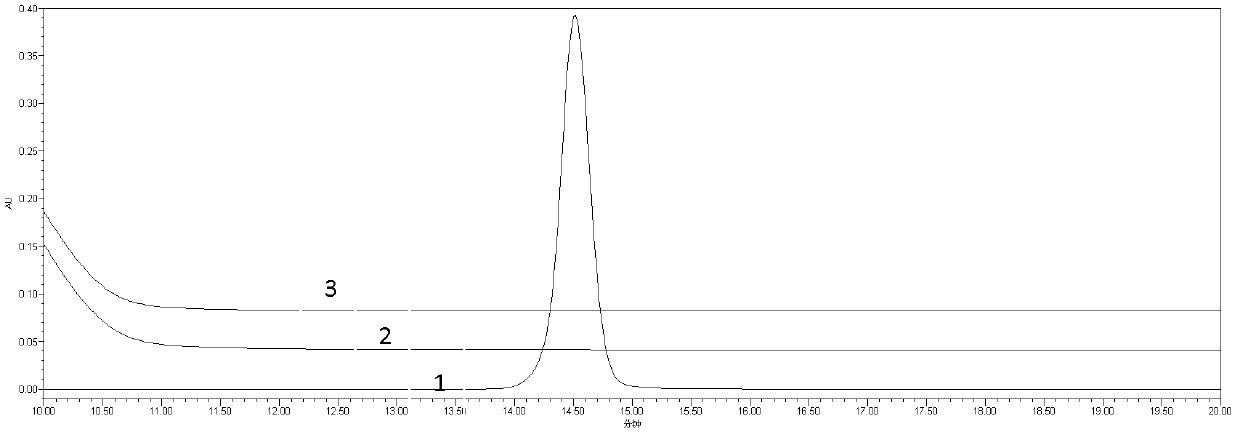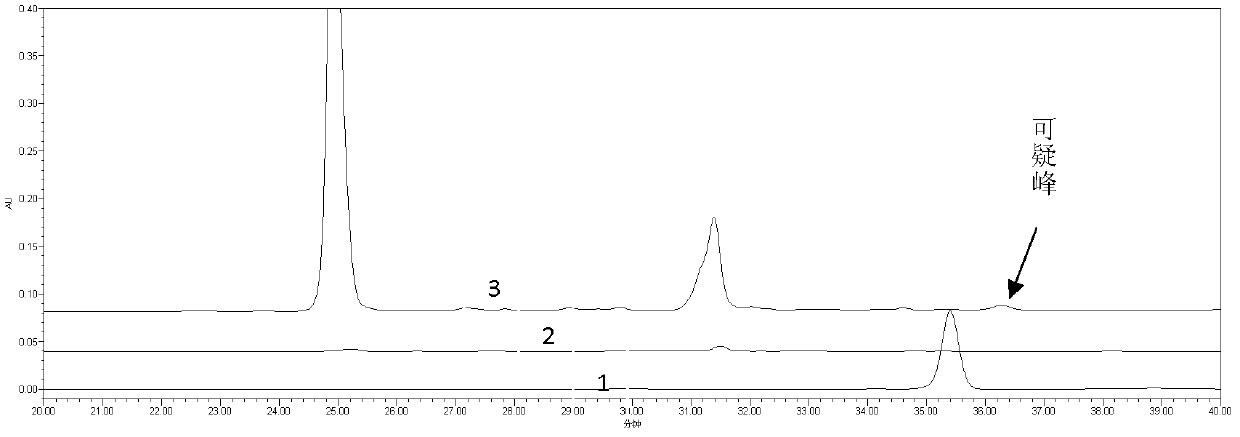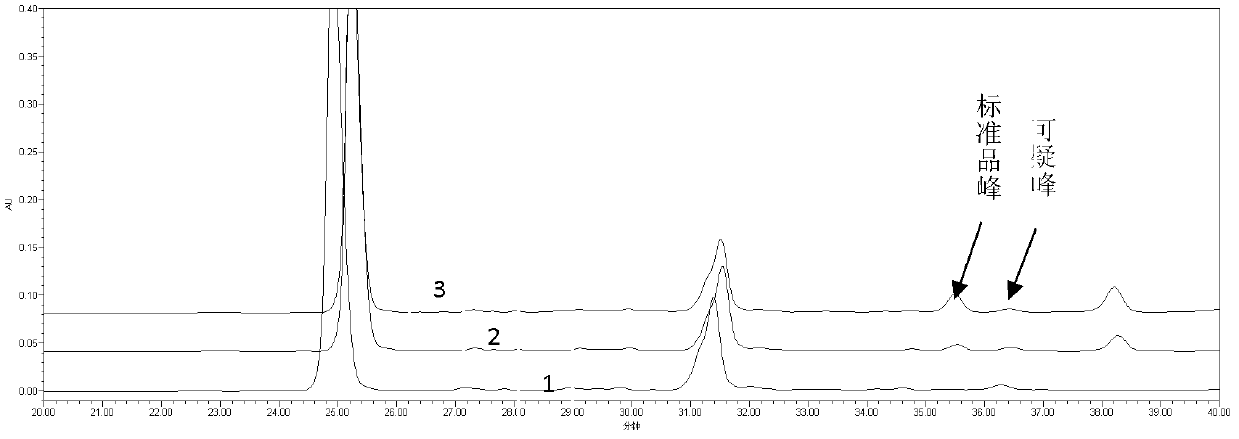Method for detecting tannin substance in salvianolic acid used for injection
A technology of salvianolic acid and detection method, applied in the field of medical detection, can solve the problems of complex composition and poor separation effect, and achieve the effect of high sensitivity
- Summary
- Abstract
- Description
- Claims
- Application Information
AI Technical Summary
Problems solved by technology
Method used
Image
Examples
Embodiment 1
[0085] Preparation of salvianolic acid for injection: take a certain amount of salvia miltiorrhiza, add water to decoct three times, combine the decoction, cool, let stand, centrifuge or filter to remove precipitate, pass through polyamide column, and eluate pass through AB-8 type large Pore adsorption resin, eluting with water, discarding the water, eluting with ethanol, recovering ethanol under reduced pressure until there is no alcohol smell, adjusting the pH to near neutral, finally adding mannitol, packaging, and getting ready.
[0086] Detection: Preparation of unhydrolyzed sample solution: Accurately weigh 0.1 g of salvianolic acid, dissolve in 10 ml of 60% acetone, ultrasonicate for 30 min, and filter through a 0.22 um microporous membrane to obtain the product.
[0087] Preparation of hydrolyzed sample solution: Accurately weigh 0.1 g of salvianolic acid, dissolve it in 5 ml of 60% acetone, add 5 ml of 2 mol / L hydrochloric acid solution, and hydrolyze at 100°C for 4 ...
Embodiment 2
[0099]The preparation of step 1 reference substance solution, the method is as follows:
[0100] Accurately weigh appropriate amounts of gallic acid, catechin, and ellagic acid reference substances, respectively, and add methanol to prepare corresponding reference substance solutions to obtain a mass concentration of gallic acid of 0.5451mg.mL -1 , The mass concentration of catechin is 0.5079mg.mL -1 , the mass concentration of ellagic acid is 0.5067mg.mL -1 of the reference solution.
[0101] Step 2 Preparation of unhydrolyzed sample solution
[0102] Accurately weighed 0.1 g of salvianolic acid for injection, dissolved in 10 ml of 60% acetone, ultrasonicated for 30 min, and filtered through a 0.22 um microporous membrane to obtain the product.
[0103] Step 3 Preparation of hydrolyzed sample solution
[0104] Accurately weigh 0.1 g of salvianolic acid for injection, dissolve it in 5 ml of 60% acetone, then add 5 ml of 2mol / L hydrochloric acid solution, and hydrolyze at 1...
Embodiment 3
[0119] The preparation of step 1 reference substance solution, the method is as follows:
[0120] Accurately weigh appropriate amounts of gallic acid, catechin, and ellagic acid reference substances, respectively, and add methanol to prepare corresponding reference substance solutions to obtain a mass concentration of gallic acid of 0.5451mg.mL -1 , The mass concentration of catechin is 0.5079mg.mL -1 , the mass concentration of ellagic acid is 0.5067mg.mL -1 of the reference solution.
[0121] Step 2 Preparation of unhydrolyzed sample solution
[0122] Accurately weighed 0.1 g of salvianolic acid for injection, dissolved in 10 ml of 60% acetone, ultrasonicated for 30 min, and filtered through a 0.22 um microporous membrane to obtain the product.
[0123] Step 3 Preparation of hydrolyzed sample solution
[0124] Accurately weigh 0.1 g of salvianolic acid for injection, dissolve it in 5 ml of 60% acetone, then add 5 ml of 2mol / L hydrochloric acid solution, and hydrolyze at ...
PUM
 Login to View More
Login to View More Abstract
Description
Claims
Application Information
 Login to View More
Login to View More - R&D
- Intellectual Property
- Life Sciences
- Materials
- Tech Scout
- Unparalleled Data Quality
- Higher Quality Content
- 60% Fewer Hallucinations
Browse by: Latest US Patents, China's latest patents, Technical Efficacy Thesaurus, Application Domain, Technology Topic, Popular Technical Reports.
© 2025 PatSnap. All rights reserved.Legal|Privacy policy|Modern Slavery Act Transparency Statement|Sitemap|About US| Contact US: help@patsnap.com



